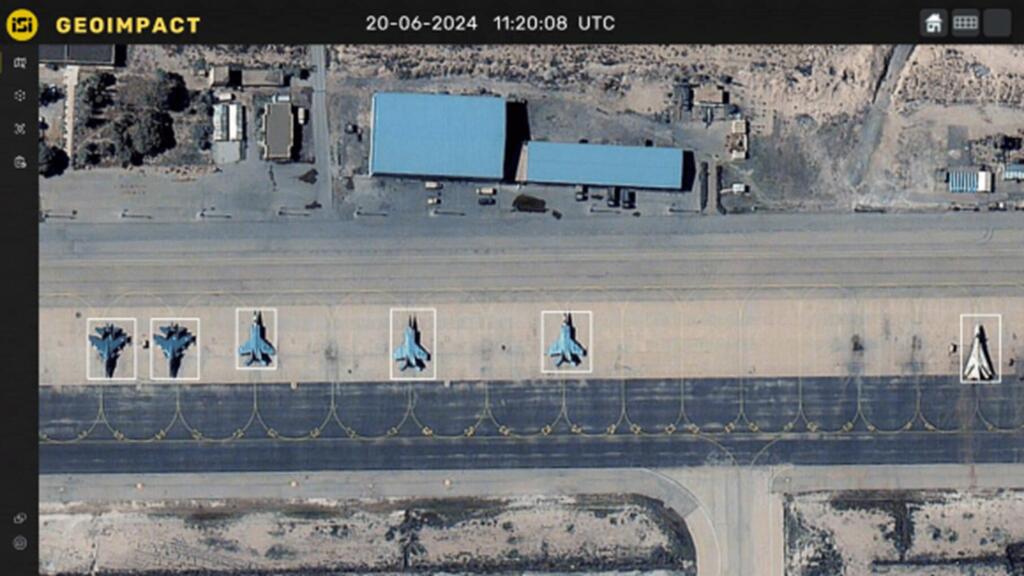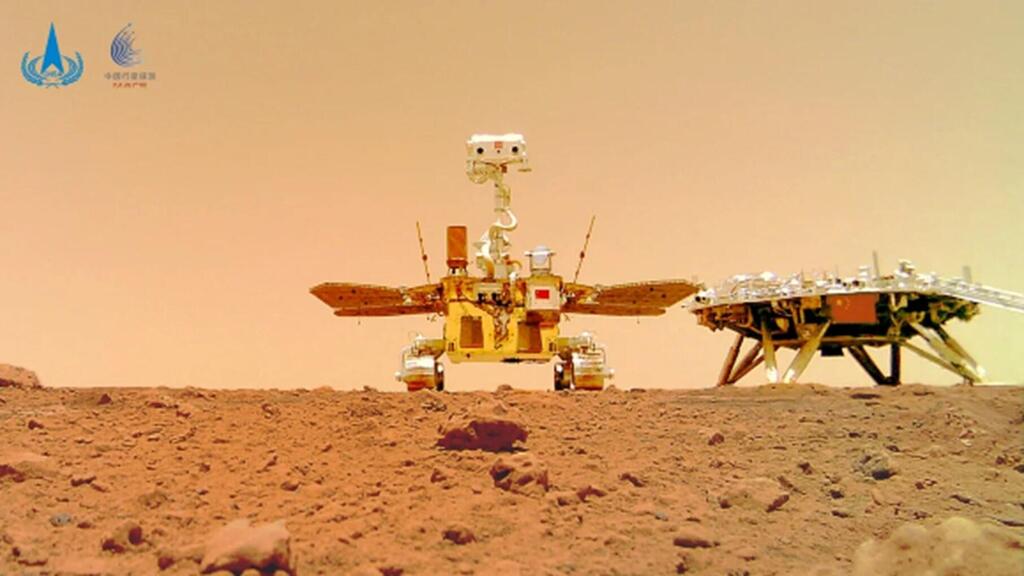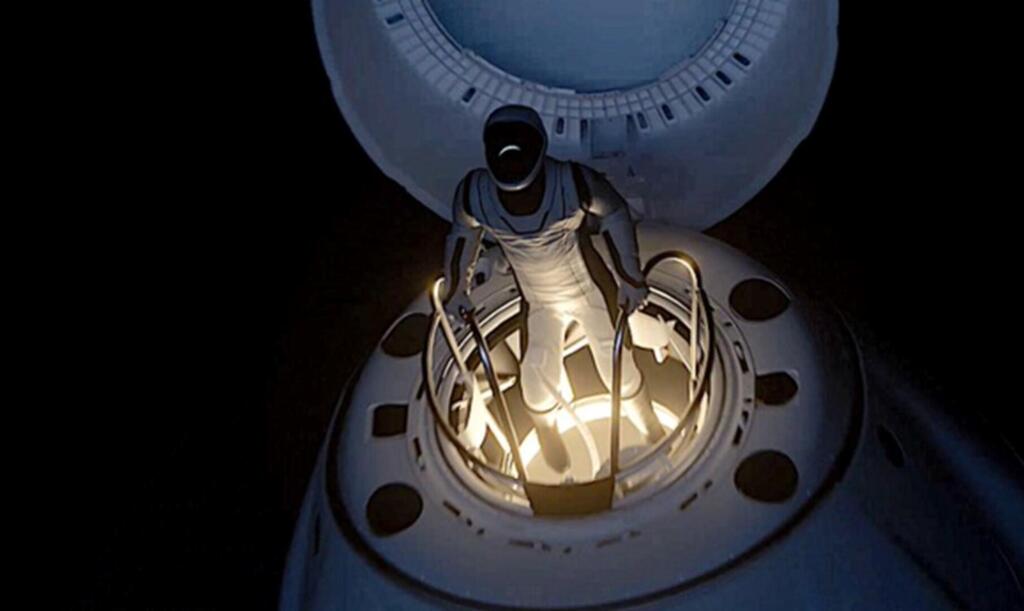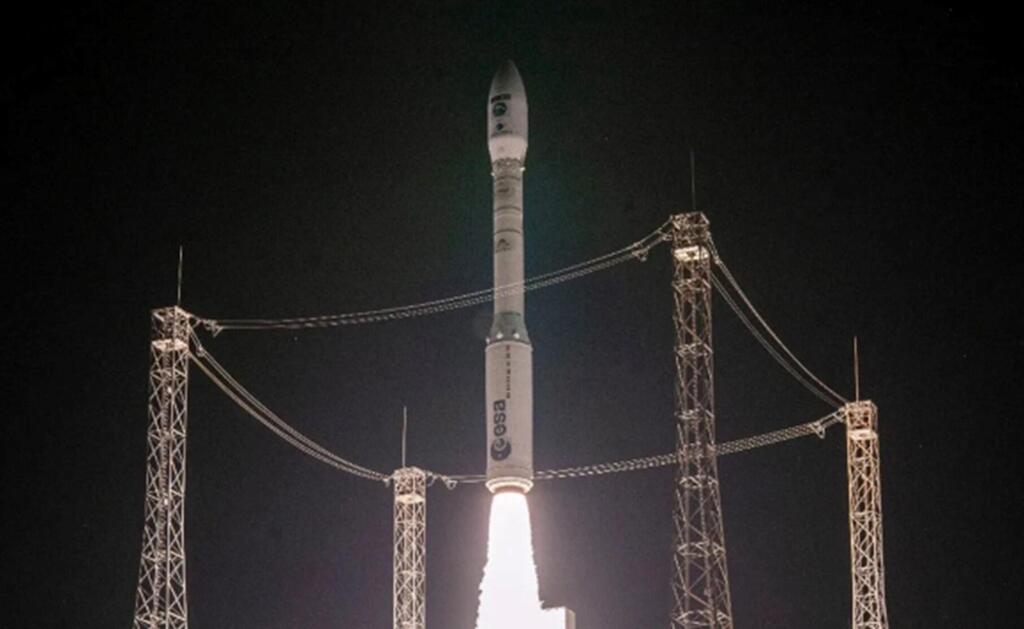Israeli eye in the sky
The Israeli observation satellite company, ImageSat International (ISI), has secured a contract valued at over $50 million to provide space-based intelligence analysis services for an international defense client. According to the company's announcement, the client will pay 54.5 million dollars over three years for satellite imagery analysis utilizing ISI's GeoImpact system, which incorporates artificial intelligence. The information analysis will be based on images from ISI's satellite array, which includes the EROS, Runner, and Knight satellites.
“The signing of this groundbreaking analytics-based intelligence agreement, which is probably one of the largest and ambitious programs awarded in the market lately, marks an important milestone for the company’s growth strategy,” said ISI CEO Noam Segal. “This achievement demonstrates ISI’s ability to leverage its unique market position and human capital to expand the range of solutions and services offered to our customers.”
4 View gallery


Analysis of security intelligence data from satellites using artificial intelligence systems. Fighter jets parked alongside a runway in an image captured by the EROS C3 satellite and analyzed by the GeoImpact system
(Photo: ISI)
Chinese samples from Mars
China has announced its plan to launch its first spacecraft to collect soil samples from Mars in 2028 and bring them back to Earth. Liu Jizhong, the chief designer of the Tianwen-3 mission, mentioned this date in an update on the mission given in China this week, although earlier this year, a senior official of China’s space program had indicated that the mission was scheduled for launch only in 2030.
According to the Chinese plan, the mission will be launched on two Long March 5 rockets. One rocket will carry the Mars lander, which will also include a spacecraft designed to launch from the Martian surface back into orbit around the planet. The lander may also feature a helicopter, similar to the one that accompanied NASA's Perseverance rover, and a six-legged rover for sample collection. The second rocket will transport a satellite to orbit Mars, along with a spacecraft intended to bring the collected samples to Earth.
The lander is expected to land at one of three sites currently under consideration by the Chinese: Utopia Planitia, where China landed its first rover on Mars in 2021; Amazonis Planitia; or Chryse Planitia. According to Liu, the mission's primary goal will be to search for evidence of single-celled organisms that may have existed on the planet in the past. The final landing site will be chosen based on the likelihood of finding such evidence in the vicinity.
China has emphasized that it will adhere to international agreements to prevent interplanetary contamination, striving to minimize the risk of contaminating Mars with Earth organisms or of bringing Martian materials that could contaminate Earth. Reports from China suggest that the mission will be open to international cooperation in areas such as payload inclusion, sample collection technologies, and sample analysis of the findings.
As noted, China successfully landed its first rover on Mars three years ago. This year, it also became the first country to successfully carry out an unmanned mission to collect soil samples from the far side of the Moon.
If China succeeds in being the first to bring samples from Mars, it would not only represent a prestigious scientific and technological accomplishment but also a significant victory in the unspoken space race between China and the United States.
The U.S. had planned a joint mission with the European Space Agency (ESA) to retrieve samples that have already been collected and stored by the Perseverance rover. The retrieval mission was originally planned for a 2028 launch, but has faced repeated delays, primarily due to high costs. A few months ago, NASA announced that it was effectively abandoning the mission and called for private entities to submit proposals for its execution. Even if a viable proposal emerges, it seems unlikely that the mission will be realized before the end of the decade.
4 View gallery


The main mission will be to search for evidence of past life on Mars. China’s first Mars rover, Zhurong, next to its lander
(Photo: CNSA)
Polaris Dawn ready for launch
SpaceX has resumed Falcon 9 launches just three days after the U.S. Federal Aviation Administration (FAA) suspended them following an explosion of the first stage of such a rocket during a recycling landing. The FAA approved the resumption of launches, likely determining that the incident did not pose a public safety risk, even though the investigation remains ongoing. By the end of last week, SpaceX had launched two rockets to deploy Starlink satellites.
The centerpiece of these launches is the historic private mission, Polaris Dawn, initially scheduled for Saturday but ultimately launched early on Tuesday. The mission, funded by billionaire Jared Isaacman, who is also in command of the mission, involves sending four private astronauts aboard a SpaceX Dragon spacecraft for five days in orbit around Earth.
During this mission, the crew was expected to reach an altitude of about 1,400 kilometers, a distance humans have not traveled since the Apollo program over fifty years ago. A record high orbit above Earth was indeed achieved on Tuesday. The astronauts are also set to perform the first-ever "spacewalk" by private astronauts, which will also serve as the first test of SpaceX's new spacesuits; and to conduct dozens of scientific and medical experiments.
The mission crew includes Scott Poteet, a former U.S. Air Force test pilot, and two senior SpaceX engineers, Sarah Gillis and Anna Menon, the latter of whom also serves as the mission's medical officer. Although a private venture, this mission features a professional team that has undergone two years of training for a comprehensive scientific mission. This mission, along with two others planned in the Polaris program, is expected to further blur the lines between the traditional activities of national space agencies and the emerging space endeavors of private and commercial entities.
4 View gallery


The first private spacewalk and the inaugural test of SpaceX's spacesuit. Illustration of an astronaut floating outside the Dragon spacecraft
(Photo: Polaris Dawn)
Sailing into space
NASA has successfully placed a small satellite powered by a solar sail into orbit around Earth. The ACS3 satellite launched in April this year on a rocket by the company Electron, successfully deployed its sail the weekend before last. The satellite itself is the size of a shoebox, measuring 23x23x34 centimeters. From this small box, a delicate sail with an area of 80 square meters has been unfurled, supported by lightweight yet strong beams.
Deploying the sail is one of the major challenges in such missions, as there is no wind—or even air—in space to aid the process. The foldable beams are crafted from ultra-light composite materials, based on carbon fibers. "Seven meters of the deployable booms can roll up into a shape that fits in your hand," said Allan Rhodes, the mission's lead systems engineer.
A solar sail harnesses the energy of photons — particles of light — emitted by the Sun or other sources, allowing this energy to be used to propel spacecraft. Since a photon has very little energy, a very large sail is necessary to capture enough photons with optimal light reflection. The entire system must be extremely light to allow the limited energy to move its mass.
Changes in the sail's angle or color can adjust light reflection and, consequently, the spacecraft's direction. The technology has been tested several times before, such as on the Japanese spacecraft IKAROS, which successfully reached Venus using a solar sail, and five years ago by The Planetary Society, which launched a crowd-funded solar sail spacecraft into Earth's orbit.
The main advantage of such spacecraft or satellites is that they do not consume any fuel and can remain in orbit as long as their materials endure. The ACS3 satellite will orbit Earth at an altitude of about 1,000 kilometers. Its primary purpose is to test the durability of the new materials used in the sail and beams, both for developing solar sail flight technologies and for potential applications in other space missions
A short NASA video on the ACS3 mission:
Vega: Final launch of the original First Generation Rocket
This week, the European space company Arianespace launched the original version of the Vega rocket for the last time. The relatively small rocket, designed to carry payloads of up to 2,500 kilograms into low Earth orbit, began operations in 2012 and has achieved twenty successful launches alongside two failures. In its final launch last Thursday, the rocket placed the Sentinel-2C observation satellite - an optical imaging satellite built by Airbus for the European Union's Copernicus program - into orbit.
The Vega rocket will be succeeded by the Vega C model, a slightly larger version that had a successful maiden flight in 2022. However, its second launch at the end of that same year failed due to a design issue with the second-stage engine. Since then, no Vega C rockets have been launched, but the model is expected to return to service in November, contingent upon the success of a test for the improved engine in October.
The retirement of the original Vega rocket marks a generational shift in the European Space Agency's launch program, with a transition from Arianespace to Avio. Avio is already responsible for the marketing and sales of Vega rocket launches and is expected to take over the operation of the missions themselves by 2025.
4 View gallery


Final launch and farewell. The Vega rocket launch from the European spaceport in French Guiana this week
(Photo: Arianespace)

